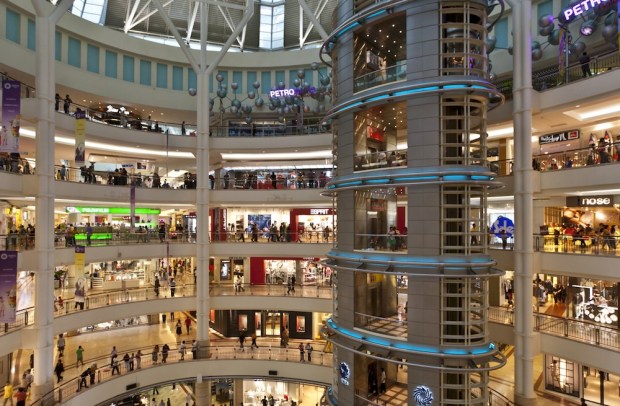Are Online Merchants The Mall’s Unlikely Salvation?

One might imagine that mall operators nationwide take a rather jaundiced view of the internet, since online shopping has more or less killed the mall.
But perhaps that is the old conventional wisdom — the emerging idea is that online retailers are giving back some of what they’ve taken away these days.
“We don’t view [online retailing] as the enemy, we view it as another distribution channel,” said Stephen Lebovitz, chief executive officer of mall owner CBL & Associates.While online sales make up less than 10% of all retail sales today, Mr. Lebovitz said, the number will grow.
Retailers are repurposing physical locations as distribution centers of sorts — and online shopping’s greatest hits are starting to appear more and more often in the “real world” via pop-up shop or even long term locations like Amazon’s bookstores.
And some online-focused businesses — Happy Returns, for example — thrive in mall locations. The firm takes in-person returns from participating online retailers at six malls in California, Chicago and Virginia. Returned items are sent to a regional processing hub, then on to retailers’ fulfillment centers, third-party logistics companies or liquidators.
And while such efforts are small — they are what mall operators are looking toward to chip away at the vacancy crisis brought on by a string of small retailer bankruptcies. Vacancy rates are up in community shopping centers in 30 of 77 U.S. metro areas last year, compared with 24 in 2015 and 19 in 2014, according to data from real estate researcher Reis Inc.
“We have to be creative,”said Lou Conforti, chief executive of mall landlord Washington Prime Group. “People are so hungry in Middle America for interesting products.
“Online merchants are trying to duplicate their online strategy into the physical world, trying to optimize the way customers look for items, gathering feedback about their offline experience,” said Mohamed Haouache, chief executive officer of Storefront, an online marketplace for renting short-term retail space.
And those vacancy rates will likely stay elevated — even as online merchants are moving (tentatively) into the real world. Amazon and Google are buying up physical locations — but generally speaking, only in “A” malls, the rarified class of high value, high foot traffic shopping destinations that have not been hit by the physical retail blight that is running “B” and “C” malls out of business.
Analysts and landlords still expect to see a dip in demand for retail space across the country as more retailers rethink their physical footprint.
“E-commerce doesn’t mean the death of the American shopping mall. But there are clearly too many malls in the U.S. and hundreds are likely to close or become irrelevant retail destinations over the coming decade,” said Andy McCulloch, managing director of real estate analytics at Green Street Advisors, a research and advisory firm.
